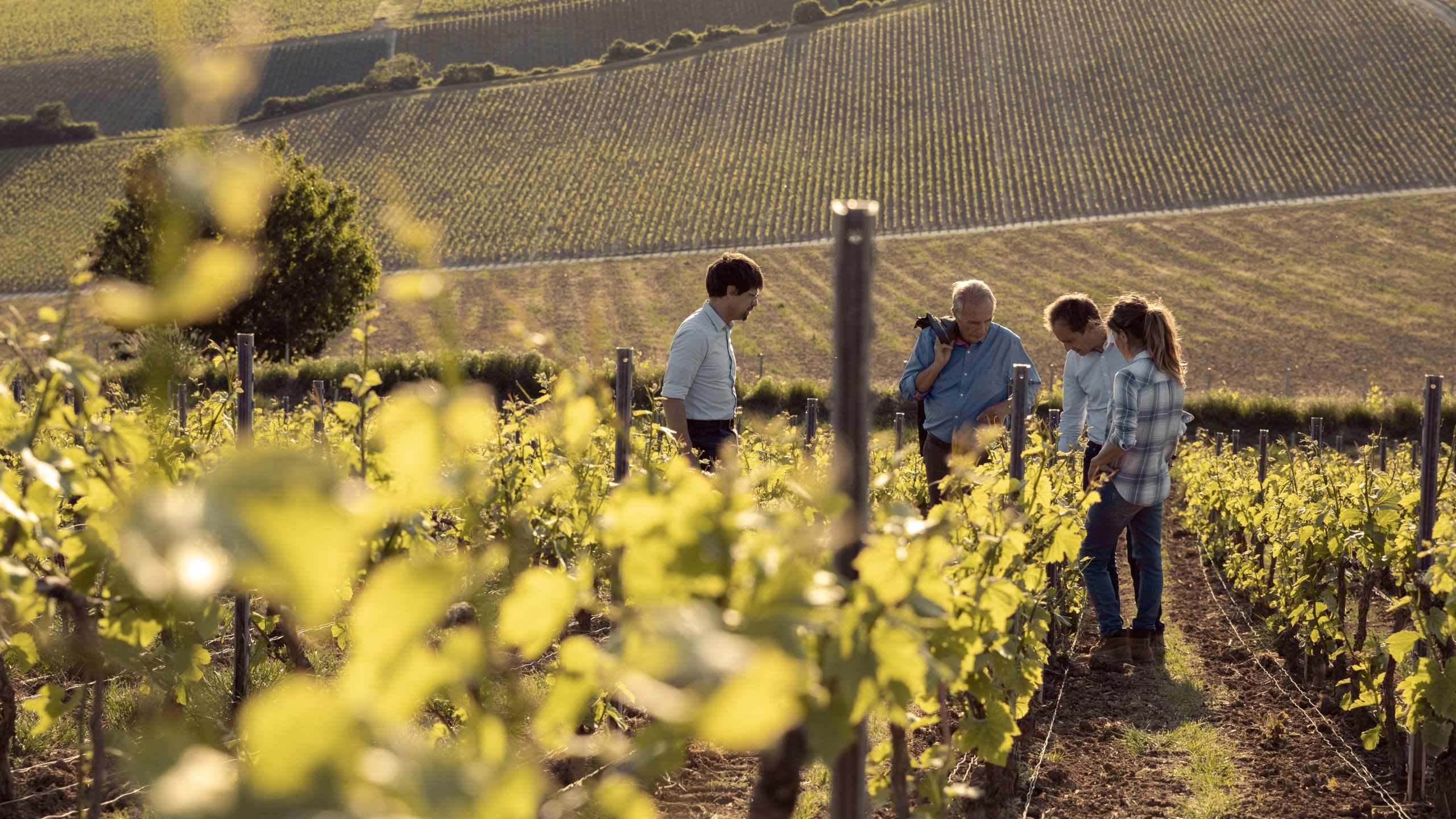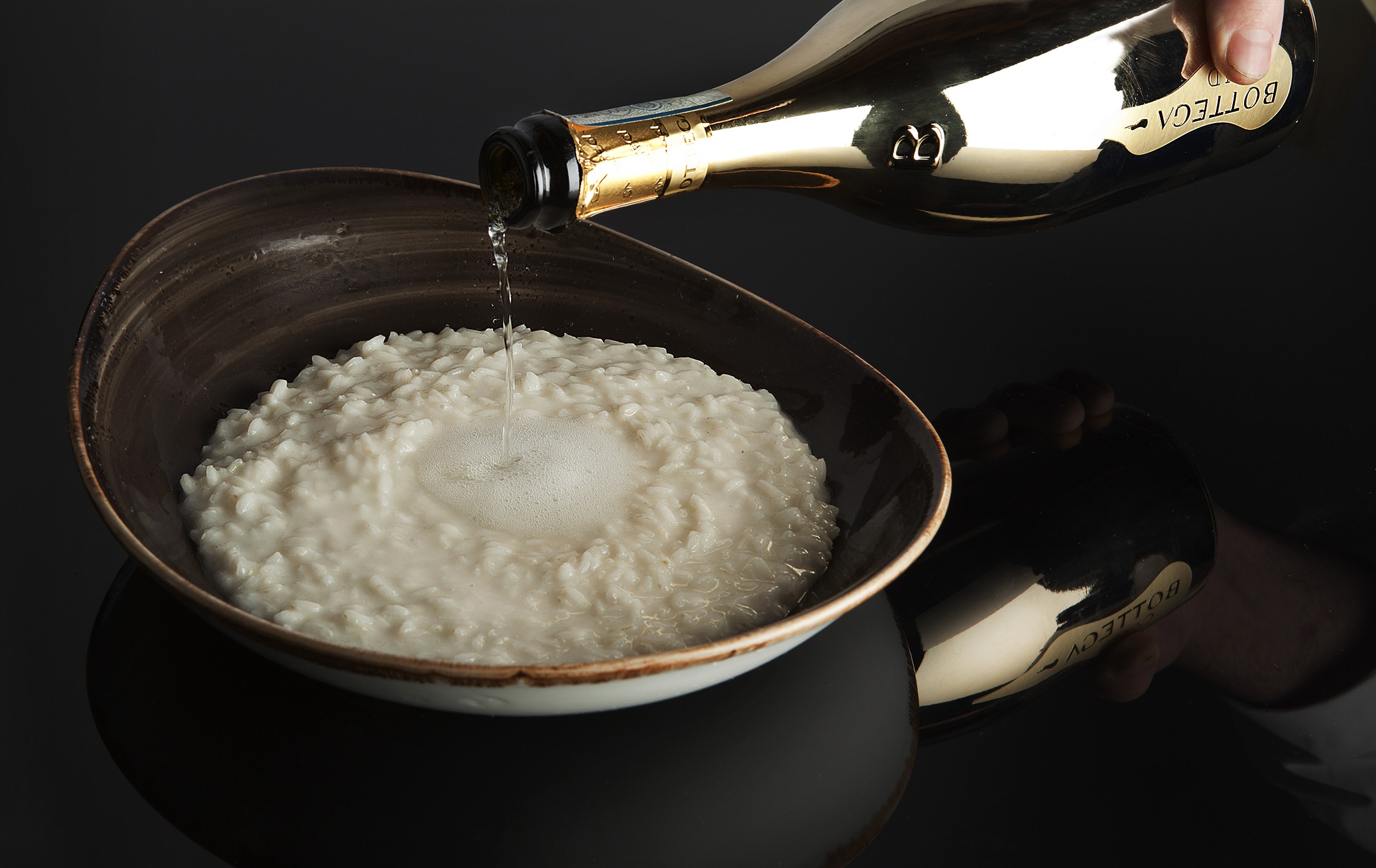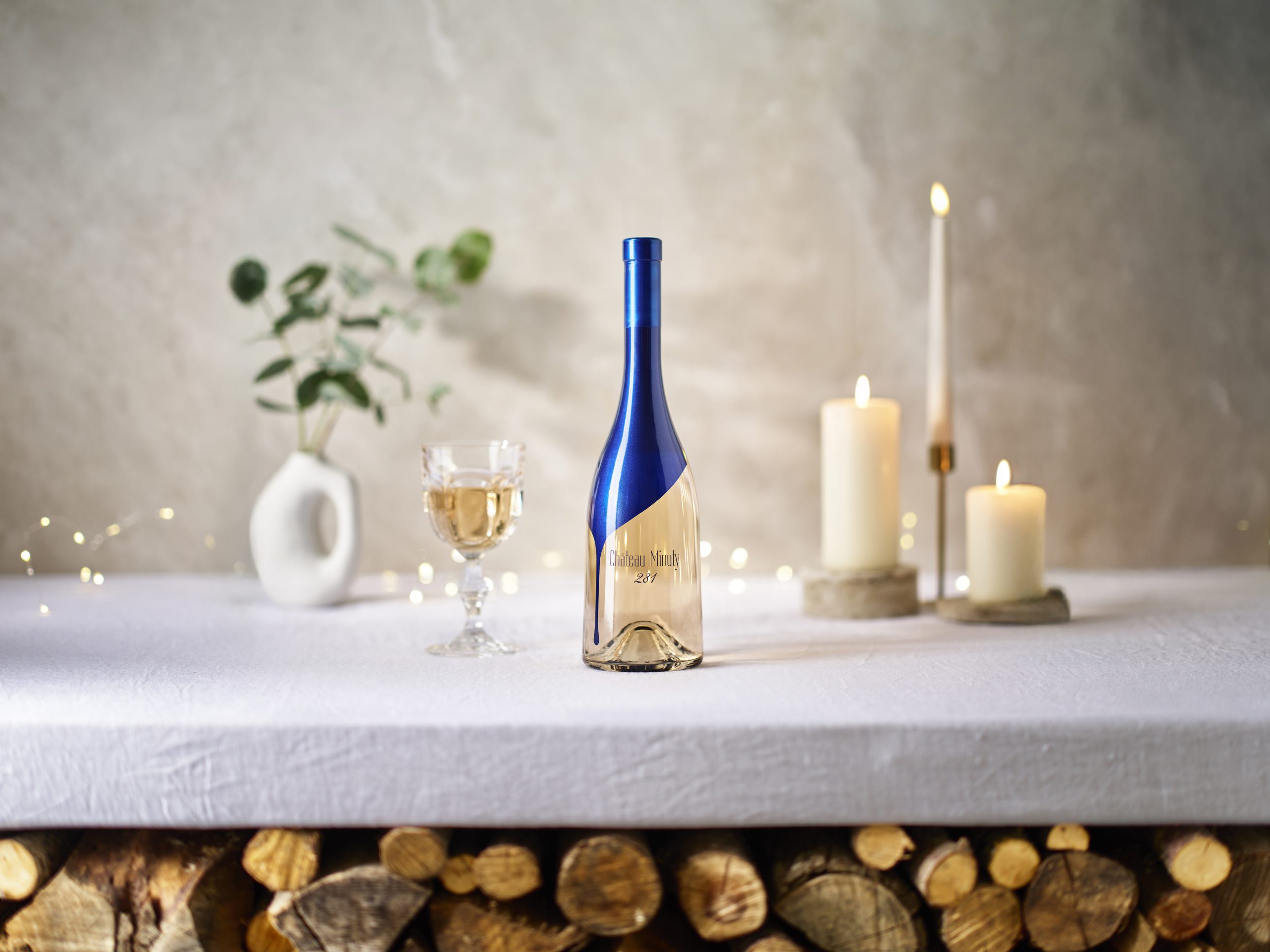Bordeaux blanc sec & Vin de France 2023: tasting notes
db’s Bordeaux correspondent found much to be excited about in the white wines – after July’s overcast weather and impressive day-to-night temperature ranges during the harvest locked in freshness. The results, overall, are also rather more homogeneous than the reds and it was often both exciting and refreshing to taste them.
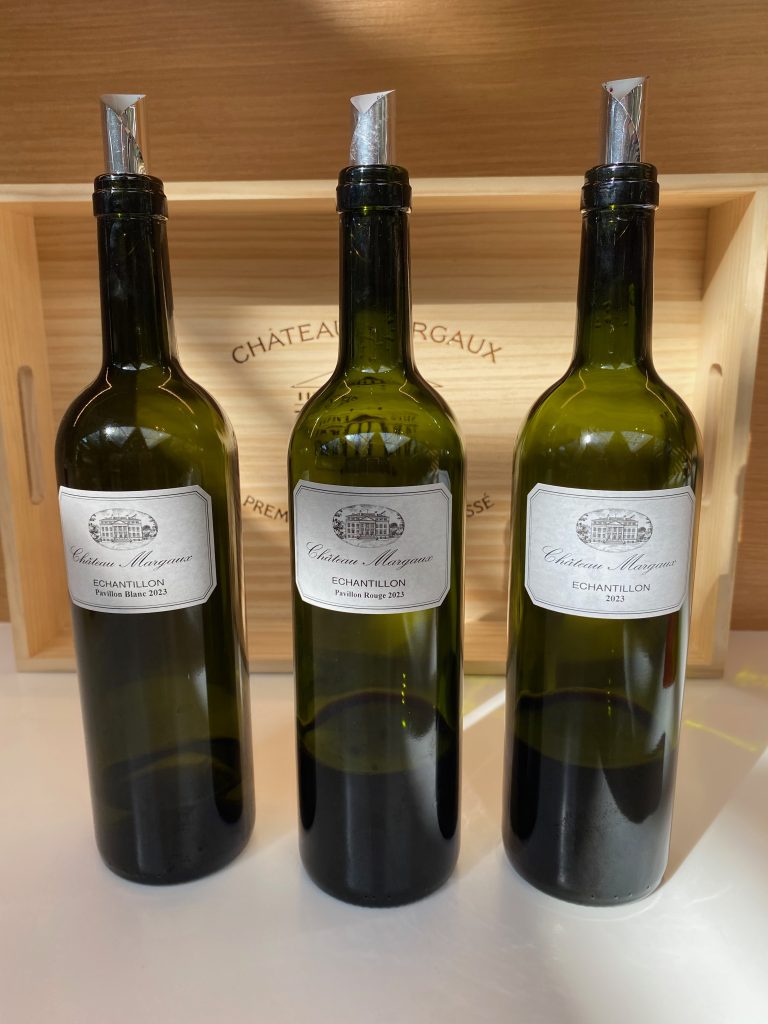
A note on the ratings
I have again decided to provide an indicative rating for each wine alongside the published comment. All such comments and ratings are necessarily subjective (they cannot be anything else when one thinks about it). I would urge you to look at the two together and, if anything, to privilege the comment over the rating. My aim is more to describe the wine in the context of the vintage, the appellation and recent vintages of the same and similar wines, rather than to judge the wine per se.
The ratings, of course, reflect my subjective evaluations and relative preferences between wines. Your palate is likely differ from mine. I hope that my comments give you at least enough information to be able to recalibrate my ratings and, in so doing, to align them more closely to your own palate. To give an example: if the idea of the ‘new classicism’ leaves you cold, you may well wish to discount the (typically high) ratings I have given to wines described in such terms.
2023, like both of its predecessors is, of course, a far from homogeneous vintage – and, consequently, my ratings span a considerable range (from the very top of the scale downwards). I see little interest, either for the consumer or the producer, in publishing very low scores. Consequently, I have decided not to publish scores for classed growths (or equivalent wines) that I have rated below 90 (here the range 89-91) and for crus bourgeois (or equivalent wines) that I have rated below 89 (here the range 88-90). Where no rating is published, the wine would have scored below these thresholds. Where my written assessment of the wine might also have proved unflattering to the property, I have simply chosen to publish neither the commentary nor the rating.
Finally, élevage is likely to be very important in determining the quality in bottle of these wines. I am no soothsayer and cannot predict how that will turn out (another reason for the use of banded ratings). But all en primeur ratings should be treated with caution and taken with a certain pinch of salt.
Bordeaux blanc sec & Vin de France
Aile d’Argent (Bordeaux blanc; 50% Sauvignon Blanc; 44.5 Sémillon; 5% Sauvignon Gris; 0.5% Muscadelle; pH 3.2; 13.5% alcohol; no malolactic fermentation and Sauvignon Gris and Muscadelle co-fermented; to be bottled in June; tasted at Clerc-Milon with Jean-Emmanuel Danjoy). Rich, almost a little fat, very floral with white almond and frangipane too. Linden, lime, jasmine. Incredibly ample. Apple flesh. Very zesty too with grapefruit above all. The Sémillon gives this the frame and the Sauvignon Blanc brings the citrus energy, but it needed as little taming (as Jean-Emmanuel explains). It could not be left full range. Tense and tender. Fine. Refined. Blood orange. Mandarin rind. 92-94+.
Blanc d’Aiguilhe (Bordeaux blanc; 100% Sauvignon Blanc; a final yield of 28 hl/ha; 13% alcohol; tasted with Stephane and Ludovic von Neipperg at Canon La Gaffelière). Very crisp, bright and lifted. Gracious and delicate, despite that, but it perhaps lacks a bit of complexity. Fills out the cheeks very well. Full. Hyper fresh. Crunchy. Nettles. Grapefruit. Citrus in all its glory. A little white flower. Crushed stones. Very chiselled and redolent of its limestone terroir. 90-92.
Blanc de Lynch Bages (Bordeaux blanc; 81% Sauvignon Blanc; 11% Sémillon; 8% Muscadelle; pH 3.12; 13.2% alcohol; 50% new oak; tasted at Lynch-Bages). Lime and lime zest, citron pressé, lemon juice, white grapefruit, mimosa, crushed rocks. I like this much more than I used to and above all in this vintage, with its energising acidity and structural freshness. Tense and sapid. A lovely patina. Refreshing. 92-94.
Cuvée Céline de Chateau d’Arsac (100% Sauvignon Blanc; an impressive final yield of 65 hl/ha; from 4 hectares on a clay and gravel terroir; just 5000 bottles; pH 3.35; 13.35% alcohol). Already bottled. The first time I’ve tasted this. It’s another Eric Boissenot consulted wine, as is the excellent d’Arsac grand vin itself. This has a pleasingly glassy purity to it. Grapefruit zest, fleur d’oranger, mandarine and a little white nectarine. Juicy, intensely fresh and with lovely little rivulets of sapidity breaking up the mid-palate and refreshing the palate in so doing. I like very much these blancs secs from Margaux that have started to emerge in recent years. 88-90.
Clos des Lunes Lune d’Argent (Bordeaux blanc; 70% Sémillon; 30% Sauvignon Blanc). Comprised of parcels from each of the five communes of Sauternes. Beautiful in the glass, with assorted golden and greener highlights on swirling in the spring sunshine of Bordeaux. Tight, tense and taut with a well-defined and quite tight cylindrical core that helps accentuate the sense of freshness here. Zesty. Crisp and bright, with lots of energy and forward momentum over the palate, this is very enjoyable and, as ever, will represent great value. It has a certain age-worthiness too. 89-89.
Le Cygne de Chateau Fonréaud (Bordeaux blanc; 60% Sauvignon Blanc; 25% Sémillon; 15% Muscadelle). Really super in this vintage, though with just a the hint of a touch of residual sugar, almost making one think we’re tasting a blanc sec from Sauternes or Barsac. This is rich and full, but never fat because of the vibrant yet balanced and well-distributed freshness from the acidity. Confit lemon and lemon curd, lemon custard with a little vanilla and a slight hint of more exotic notes – mango perhaps. Frangipane and toasted almonds. 89-91.
Doisy-Daëne Grand Vin Sec (Bordeaux blanc; 100% Sauvignon Blanc). Tense and hyper-charged with citrus. Intense and very vertical, with immense lift. An upward pointed fire hydrant of fresh sapid juiciness, almost too much in fact. There might be a trace of residual sugar here and if so that helps give this balance. A fabulous Barsac nose of confit melon and lemon, tarte au citron and lemon sorbet which makes the crispness and crunch of this in the mouth all the more shocking and exciting. Perhaps not for everyone, but I love it. 90-92+.
Doisy-Daëne Sémillon 1948 (Bordeaux blanc; 100% old-vine Sémillon from a pure calcaire Barsac terroir, presumably planted in 1948). A fabulous contrast to the Suduiraut Sauternes equivalent. This is much more vertical and more tense too, with a boat load of tension (the Titanic from the helm once the iceberg comes into sight, perhaps). Bright, wild and exuberantly fresh. An iceberg of lime, linden and lemon sorbet (appropriately enough) cuts the natural richness of the Sémillon fruit like it might the Titanic’s hull below the water line. And the cool waters of the Atlantic gush in through the open wound. Refreshing in a way, almost painfully so (with due apologies for the metaphor). 92-94.
Blanc de L’Etampe (Bordeaux blanc; 100% Sauvignon Blanc; a tiny part of the vineyard at Chateau L’Etampe of just 74 ares on sandy-siliceous alluvium from the Plio-Quaternary; pH 3.6; alcohol 13.5%; certified organic and practicing biodynamic viticulture). The consulting team are Jean-Claude and Jean-Francois Berrouet. A brilliant wine, with a lovely ‘50 (subtle) shades of citrus’ nose – lemon (quite simply), confit lemon (less simply), lemon meringue pie, tarte au citron and a little lime zest, above all on the palate. Flint too (that’s the siliceous alluvium from the Plio-Quaternary speaking!). Dense and compact, which accentuates the citrus zing. This is sparklingly fresh, incredibly dynamic, very pure and crystalline and, frankly, wonderfully refreshing and inherently quaffable – except that sounds rather vulgar and this is a wine of considerable class and elegance. Fabulous. 92-94.
Les Champs Libres (Bordeaux blanc; 100% Sauvignon Blanc; tasted with Omri Ram at Lafleur). Crystalline. Much richer and fuller than Grand Village. Candlewax, beeswax, passionflower, mimosa, green tea, camomile, greengage, gooseberry, grapefruit, blood orange. Incredible texturally. So rich and concentrated. But so incredibly fresh and tense, the acidity so well integrated structurally. So saline on the finish and zesty too. Pixilated by acidity – as if citrus had tannin! Sapid. So clean on the finish. Lovely bold frame, a very structured and chiselled central spinal column and incredibly long. Great aging potential. 95-97.
Confidence de Bastor-Lamontagne (Bordeaux blanc; 59% Sauvignon Gris; 34% Sauvignon Blanc; 7% Sémillon; in organic conversion). Fresh and lively, charged with citrus acidity and with a lot of the character of this fabulous Sauternes terroir. Many shades of citrus, orange and mandarin, mango, angelica, a little white pear and a twist of white pepper. Lots of energy and an interesting lift from the tiny amount of residual sugar that at least I think I detect here. 88-90.
Cos d’Estournel blanc (Bordeaux blanc; 70% Sauvignon Blanc; 30 Sémillon; ). Richer still, very viscous and yet glacial. More tight from the structural role played by the acidity. Tense and dynamic. Saline. Like Goulée, very vertical and chiselled and also with that Northern Médocain iodine. Preserved lemon. Mandarin. Lemon thyme. A touch of cinnamon. Lithe and tense. A lovely calcaire structure and a chewiness that brings additional textural interest. 93-95.
Fleur Cardinale Blanc (Bordeaux blanc; 57% Sauvignon Blanc; 43% Sauvignon Gris; Axel Marchal is the new consultant here for the whites). Much stronger. Crisp, bright, crunchy. Tense. Pink grapefruit. Passionflower. Green tea. Mirabelle. Much more complexity and the same tension, more concentration and depth. A little too much exotic fruit for me – though that brings a certain complexity and compensates for the vivid freshness. Chalky and mineral rich. Chiselled both by the limestone and the acidity. Almost a little strict on the finish but that’s the style. The start of something. Promising. 91-93.
Fourças-Dupré (Bordeaux blanc; 75% Sauvignon Blanc; 25% Sémillon; tasted three times with similar notes). Really excellent, as it so often is. This is tight, taut, tense and racy, with lots of dynamism and an almost electric combination of minerality and acidity. Hyper-fresh and so refreshing and quaffable as a consequence. This is wine as if it were pure fruit juice! White pear flesh, with some of its texture too, white grapefruit and lovely jasmine and honeysuckle floral notes, a little mandarin and fleur d’oranger. One of the treats of the blanc sec tastings wherever it was presented. 91-93.
Partner Content
Grace Dieu des Prieurs Chardonnay (Vin de France; 100% Chardonnay; from 0.9 hectares of sand on clay in the heart of St Emilion; a final yield of 38 hl/ha; alcohol 13.5% alcohol). Louis Mitjavile is the consultant here, the wine undergoing malolactic fermentation and subsequent aging in the family’s signature Radoux barriques developed specially for white wines. A unique wine with a quite singular and deeply engaging aromatic profile. This year it’s extremely exotic – with assorted sweet spices, vanilla pod, coconut oil, saffron, wild floral honey, dried petals, white nectarine, peach melba, Mirabelle and fleur d’oranger. On the palate, this is impressively rich and concentrated but with a wonderful zesty freshness that cuts the fat and lifts this towards a remarkably aerial finish for a wine with so much concentration. It needs plenty of time in the cave and one can understand why this used only to be offered in magnum. A deeply age-worthy wine that it will be fascinating to revisit along its long journey. 92-94+.
Grand Village (Bordeaux blanc; 80% Sauvignon Blanc; 20% Sémillon; tasted with Omri Ram at Lafleur). Incredibly tense and fresh. Linear. Rich and broad with a boat of tension and minerality. Tilleul. Lime. Lime zest. Pink grapefruit. Incredibly tense. Vivid. Vibrant. Pulsating with freshness. Stoney. Sapid. Saline. 92-94.
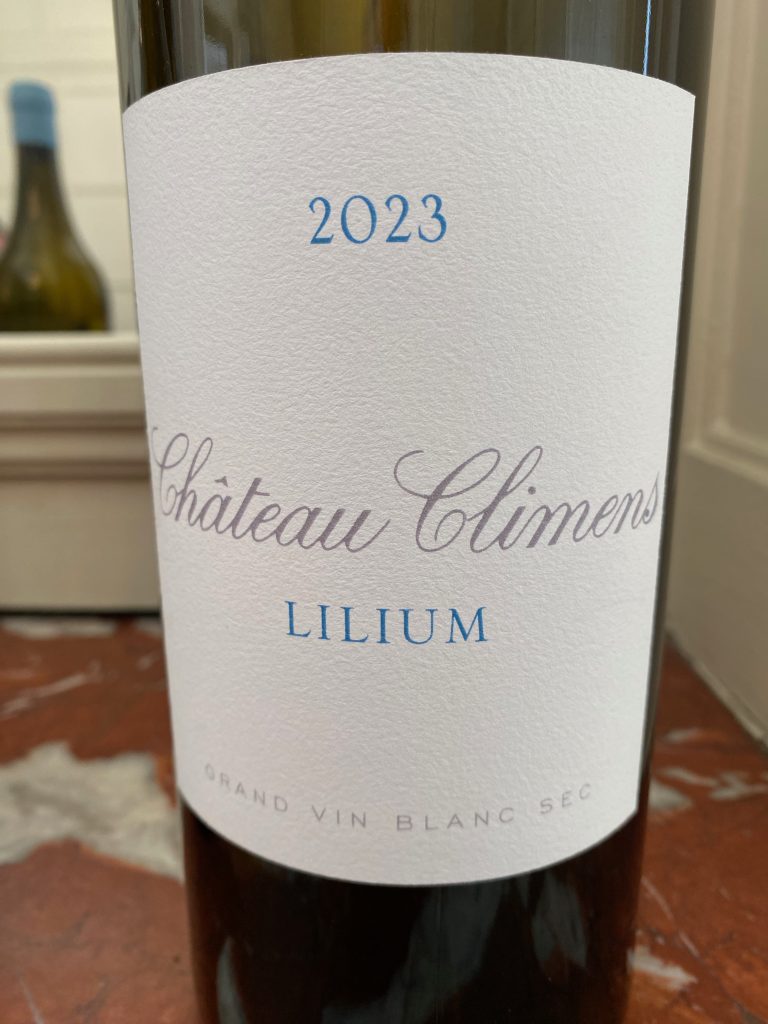
Lilium de Chateau Climens (Bordeaux blanc; 100% Sémillon; a final yield of 27 hl/ha; 4.2 g/l of residual sugar; 12.5% alcohol; no oak, just the precision of the wine globe; Sémillon on limestone). Lovely, bright, crisp, leafy fruited florality. So elegant and lifted. White currant leaf, passionflower, lily, mimosa, citron pressé and tarte au citron, linden and homemade lime cordial with a little zest. White grapefruit too. Gracious. The gentle touch of residual sugar lifts this and renders it Ygrec like. Wonderfully tense and zippy. Zesty and fresh. Lemon sorbet, lemon soufflé with that levity. Excitingly vibrant. So lithe and floaty, dynamic and energetic. A step up from the already excellent Asphodèle created by Berenice Lurton and very much in the same vein. Perhaps the most delicate and refined blanc sec of the vintage. So glassily textured yet with refreshing acidity from below welling up. So refreshing. A singularity. 93-95+.
Lions de Suduiraut (Bordeaux blanc; 57% Sémillon; 30% Sauvignon Blanc; 13% Sauvignon Gris; pH 3.4; 13.5% alcohol; tasted with Christian Seely at Pichon Baron). This has a lovely cool, glacial purity to it and, as a wine, it remains highly competitive even in a market in which there are more and more competitors. Tense and racy. Bright, crisp and energetic. Lovely. Gracious. Tender and with loads of dynamism. That brilliant grapefruit zestiness. The best ‘S’ or Lions de Suduiraut for many vintages. 91-93.
De Malleret (Bordeaux blanc; 100% Sauvignon Blanc; in organic conversion). This is the first time I’ve tasted this and it’s rather lovely. Tense, quite aerial, with decent complexity, a fair bit of mid-palate substance and lots of racy acidity giving this a very dynamic and hence engaging mouthfeel. Another very fine Médocain blanc sec in this vintage. I like the hint of fleur d’oranger, intermingling with pink grapefruit, on the clean and well-sustained finish. 88-90+.
Le Merle Blanc de Château Clarke (Bordeaux blanc; largely Sauvignon Blanc, with a little Sémillon, Muscadelle and Sauvignon Gris; tasted in Paris from a sample sent from the property, not yet bottled; 13% alcohol). This is very fine and elegant with a very expressive and lifted aromatic profile – white pear, quince, lime, jasmine and green tea, perhaps a little Mirabelle and greengage. There’s a pleasing sense of intensity too on the palate, with the distinct chalky-stony minerality from this limestone-clay terroir contributing to hold the fruit close to a well-defined central spine. Highly recommended. 91-93.
Pagodes de Cos Blanc (Bordeaux blanc; 80% Sauvignon Blanc; 20% Sémillon). Quite broad, ample and rich, with lovely notes of lime and linden and a delicate iodine minerality. Crushed rocks. A great mouthful. Sapid and juicy but lacking just a bit of the density, tension and length of the grand vin. 90-92.
Pavillon Blanc de Chateau Margaux (Bordeaux blanc; 100% Sauvignon Blanc; a final yield of 37 hl/ha; a very early harvest and picked very early in the morning – all done, each day, by 10.30 AM; there was 45% of the grand vin and 50% of this, the second wine; pH 3.15; 13% alcohol; tasted at Château Margaux). Shimmering in its cool, almost glacial purity, a little cathedral candle wax. Blood orange. Citron pressé and white grapefruit, gooseberry, honeysuckle, jasmine, maybe a little lemongrass too. Crystalline, limpid, lithe and dynamic with a lovely welling up from below of fresh sapidity breaking up the crystal clear surface of the wine in the mouth. Again, like the red, a feat of textural perfection. Very intense and structured by the acidity. Fabulous. 95-97.
Plain Point (Bordeaux blanc; a blend of Sauvignons, blanc and gris). Ultra-fresh, ultra-sapid and juicy and super-charged with tension, I can imagine this dividing the jury a little, but I love its sheer crispness, its crystallinity and its cool quaffability. The crushed stony minerality is lovely too. Salivating. 88-90.
Rayne Vigneau Grand Vin Blanc Sec (Bordeaux blanc). An intriguing and enticing nose of sage, wild herbs, even a trace of lavender and a panoply of citrus elements – from mandarin and fleur d’oranger to lime cordial and pink grapefruit; there’s a little candlewax too and maybe some nettles. On the palate, this is quite rich and intense but invigorated by both the spice notes and those many shades of citrus-inflected acidity. Indeed, the latter really makes the wine dance over the mid-palate, but more in the image of a maypole dancer than a ballerina (with each wave of citrus freshness like a rhythmic leap). There’s a fascinating minerality to this too – crushed rock and whetstone doesn’t quite capture it, but it’s the best I can do (I’ll happily re-taste down the line to see if I can do better!). Very complex. Very lovely. You sense, I hope, my enthusiasm! 93-95.
Reynon (Bordeaux blanc; 100% Sauvignon Blanc; from Jean Jacques Dubourdieu). Leafy, nettly and lovely. Tense and lithe with lovely lime, linden and passionflower notes. A little passionfruit and even a hint of guava. Tense and sapid, racy and charged with white florality and stony, almost limestone-y, minerality. So juicy. 88-90+.
Saransot-Dupré (Bordeaux blanc; a blend of Sémillon, Sauvignon Blanc and Muscadelle). There’s a pleasing intensity to this, reinforced by the grapefruit zest and pith acidity. Nettles, too, elderberry and elderflower, white currant and lime. A wine that’s always difficult to pass over on a restaurant listing and certainly highly recommended in this vintage. 88-90.
Grand Vin Blanc de Suduiraut Vieilles Vignes (Bordeaux blanc; 57% Sémillon; 43% Sauvignon Blanc; pH 3.4; 13.8% alcohol; tasted with Christian Seely at Pichon Baron). Incense, white flowers, nettles, gooseberry and gooseberry leaf, lime, almost a hint of the barrel room strangely (but not really a sensation of oak per se). Candlewax. There’s lots of lift. Actually, it’s richer and maybe less tense than you might imagine from the aromatics, but more serious for that. A nice tight frame that in itself frames, tames and concentrates the vivid energy. A wine of great finesse and class. 92-94.
Suduiraut Pur Sémillon (Bordeaux blanc; 100% Sémillon; pH 3.4; 13.6% alcohol; just 2200 bottles produced). Wild strawberry. Lime. Lime zest. Pink grapefruit. A little candlewax. You expect this to be rich, and it is in a way, but that’s not the first impression. It’s so structured and chiselled (the signature of the calcaire terroir is so strong) that it descends like an unfolding staircase revealing layers of additional freshness as it does so. Brilliantly vivid. Wondrously engaging. Needs time, as this is a little bit more of a vin de garde. Buy both and drink (or start to drink) the Vieilles Vignes first, looking forward to the moment you taste them side by side. Tense and agile. 92-94+.
Du Tertre (Bordeaux blanc; 32% Sauvignon Blanc; 23% Chardonnay; 23% Gros Manseng; 22% Viognier). The red of course, has a rather unusual composition at du Tertre, but it seems conventional when you look at what’s in this! A wine I rarely taste at this stage – and, boy, is it good in this vintage! Pure, precise, focussed yet intimate and subtle, with one of those slightly closed noses that offers just enough to entice and invite you in. Sage, wild Italian herbs, lime and lime zest, jasmine, saffron and mandarin. And then, on the palate, wow! This is rapier sharp in its intensity and precision and that comes as a shock after the calm, cool sense of intimate tranquillity from the aromatics. White grapefruit (juice, pith and zest), passionfruit and guava (but just a touch of each), beeswax and jasmine again. A great wine with some almost Sautern-esque fruit complexity but a searing acidity and a biting freshness that brings to this so much energy. 91-93.
Tronquoy Blanc (Bordeaux blanc; 51% Sémillon; 49% Sauvignon Gris; from a tiny plot of just under 2 hectares planted by Jean-Marie Delmas on a limestone under soil; pH 3; 12.8% alcohol; tasted at Montrose with Charlotte Bouygues and Pierre Graffeuille). Lithe. Highly saline. Tense but with impressive density. Confit melon and grapefruit. Blood orange. A touch of white flowers, even white rose petals. A nice tight frame. Lots of energy and a lovely feeling of structure. Gracious yet sapid. Vibrant and pulsating on the finish. 91-93.
See here for Colin’s full tasting notes for Pessac-Léognan & Graves, Bordeaux blanc sec & vins de France, and Barsac & Sauternes 2023, as well as his appellation analysis for Margaux, St Julien, Pauillac, St Estèphe, Saint Émilion, Pomerol and Pessac-Léognan (rouge) and the white wines of Pessac-Léognan, Graves, Barsac and Sauternes.
Related news
Castel Group leadership coup escalates
For the twelfth day of Christmas...
Zuccardi Valle de Uco: textured, unique and revolutionary wines

